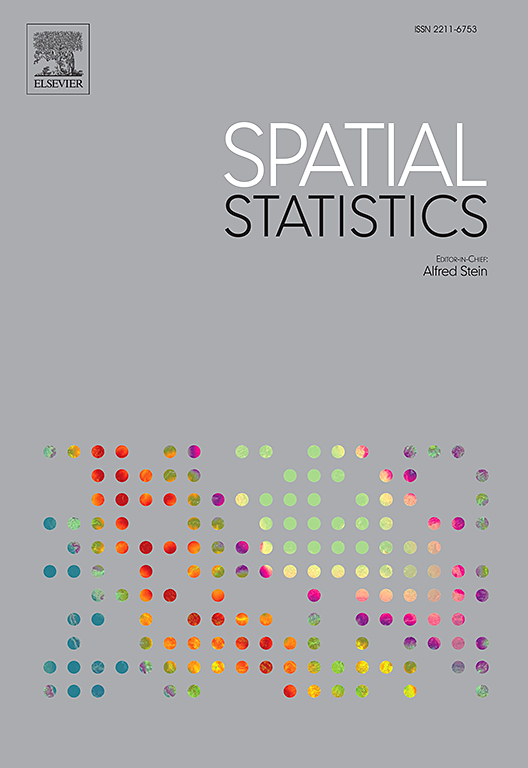变分自编码多元空间费-赫里奥特模型
IF 2.5
2区 数学
Q3 GEOSCIENCES, MULTIDISCIPLINARY
引用次数: 0
摘要
小区域估计模型对于在样本数量有限的地区估计人口特征是必不可少的,因此支持政策决策、人口统计研究和资源分配,以及其他用例。空间Fay-Herriot模型就是这样一种方法,它结合了空间依赖性,通过借鉴邻近区域的强度来改进估计。然而,这种方法通常需要大量的计算资源,限制了其对高维数据集的可伸缩性,特别是在考虑多个(多变量)响应时。本文提出了两种将变分自编码器学习到的多元空间Fay-Herriot模型与空间随机效应相结合的方法,以有效利用空间结构。重要的是,在训练变分自编码器以表示给定地理集合的空间依赖性之后,它可以在未来的建模工作中再次使用,而无需再训练。此外,使用变分自编码器来表示空间依赖性可以极大地提高计算效率,即使对于大量数据集也是如此。我们使用美国社区调查对加州所有人口普查区的5年估计来证明我们方法的有效性。本文章由计算机程序翻译,如有差异,请以英文原文为准。
Variational autoencoded multivariate spatial Fay–Herriot models
Small area estimation models are essential for estimating population characteristics in regions with limited sample sizes, thereby supporting policy decisions, demographic studies, and resource allocation, among other use cases. The spatial Fay–Herriot model is one such approach that incorporates spatial dependence to improve estimation by borrowing strength from neighboring regions. However, this approach often requires substantial computational resources, limiting its scalability for high-dimensional datasets, especially when considering multiple (multivariate) responses. This paper proposes two methods that integrate the multivariate spatial Fay–Herriot model with spatial random effects, learned through variational autoencoders, to efficiently leverage spatial structure. Importantly, after training the variational autoencoder to represent spatial dependence for a given set of geographies, it may be used again in future modeling efforts, without the need for retraining. Additionally, the use of the variational autoencoder to represent spatial dependence results in extreme improvements in computational efficiency, even for massive datasets. We demonstrate the effectiveness of our approach using 5-year period estimates from the American Community Survey over all census tracts in California.
求助全文
通过发布文献求助,成功后即可免费获取论文全文。
去求助
来源期刊

Spatial Statistics
GEOSCIENCES, MULTIDISCIPLINARY-MATHEMATICS, INTERDISCIPLINARY APPLICATIONS
CiteScore
4.00
自引率
21.70%
发文量
89
审稿时长
55 days
期刊介绍:
Spatial Statistics publishes articles on the theory and application of spatial and spatio-temporal statistics. It favours manuscripts that present theory generated by new applications, or in which new theory is applied to an important practical case. A purely theoretical study will only rarely be accepted. Pure case studies without methodological development are not acceptable for publication.
Spatial statistics concerns the quantitative analysis of spatial and spatio-temporal data, including their statistical dependencies, accuracy and uncertainties. Methodology for spatial statistics is typically found in probability theory, stochastic modelling and mathematical statistics as well as in information science. Spatial statistics is used in mapping, assessing spatial data quality, sampling design optimisation, modelling of dependence structures, and drawing of valid inference from a limited set of spatio-temporal data.
 求助内容:
求助内容: 应助结果提醒方式:
应助结果提醒方式:


